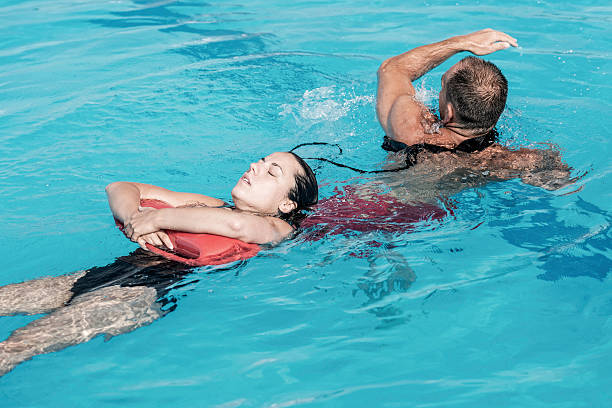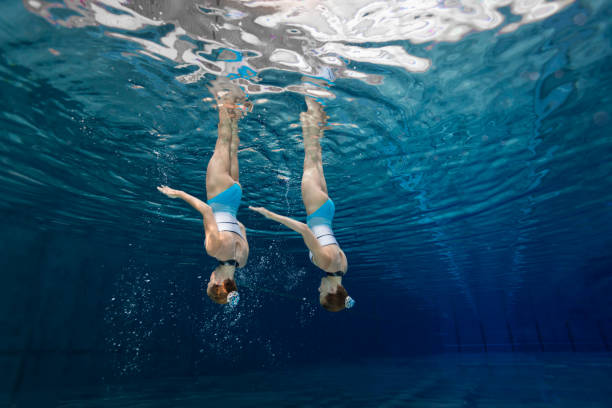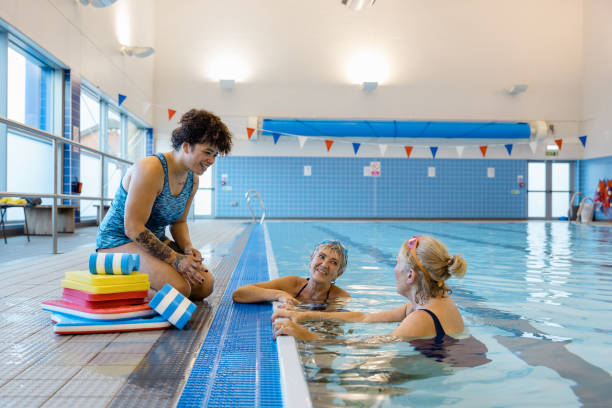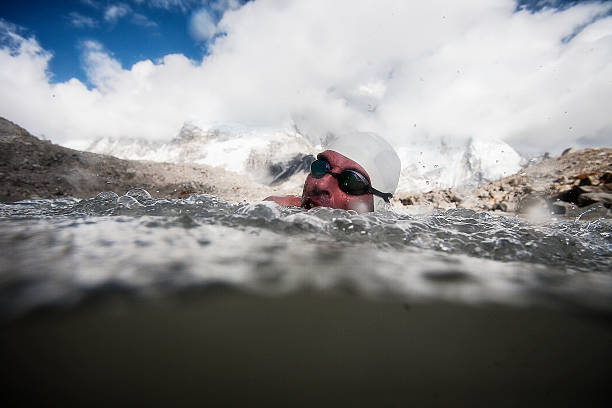One of the most exciting aspects of swimming is using fins. Put a pair on your feet and zip through the water at incredible speeds. They aren’t only fun for mixing up your swimming routine and can also be used as training tools to improve your technique, leg strength, and flexibility and prevent injury to the shoulder.
We’ll explain in this article why swim fins can benefit your swimming skills. We will also discuss some of the disadvantages of fins, such as blisters and overuse in training. Next, we will show you what to look for when choosing a pair of swim fins. Finally, we’ll end the article with some fin-swimming exercises.
Swim Fin Training
The swim fin is the most famous piece of equipment on the pool deck. It’s fantastic to glide through your swim set, making fast intervals with ease. You’ll feel hooked after your first swim with fins workout.
Use fins in your swimming training sessions, whether you are a triathlete or a recreational swimmer. This will have a positive impact on both your mental and physical health. Let’s now see how these excellent training tools can benefit you.
IMPROVE YOUR KICK TECHNIQUES AND LEG STRENGTH
Swimming with fins is a great way to improve your flutter kick. A poor kicking technique can lead to poor performance. A good practice is to point your toes and kick at a fast rate with a limited range of motion. Good kicks result in higher body position and more propulsion.
Swim fins provide extra resistance, allowing you to feel your feet moving in the water. You can then adjust your form based on this feeling. Your feet point more towards the side, or you need to increase your speed. You’ll find yourself swimming faster when you make positive changes.
Your legs’ strength is another factor that determines the effectiveness of your kick. All major leg muscles are used in the flutter kick, including the quadriceps and glutes. Your legs will be stronger due to the resistance provided by swim fins. Your up-kick’s muscle strength is especially important. As your glutes and hamstrings get stronger, so will your muscle strength.
USE FINS FOR INCREASED ANKLE FLEXIBILITY
One group of competitive swimmers was taught plantarflexion stretches in a study. The other group was not. Study results showed that swimmers who had greater ankle flexibility were able to swim faster than the rest of the swimmers.
Swimming fins can increase the range of motion for your ankles. Fins provide more surface area and resistance, which will allow your feet to move better while you kick. Your ankle flexibility and kick efficiency will increase as you continue to use fins.
You can also improve your ankle flexibility by performing stretches and exercises that increase ankle dorsiflexion during dryland training sessions.
BETTER BODY POINTING AND STROKE TECHNIQUE
Swim fins enable you to swim faster due to increased propulsion. Your body will be higher than the water surface because of this. You’ll feel less drag and be able to swim faster if you have a higher body position. This improved body position will become a habitual and you should attempt to replicate it while swimming without fins.
Because you can depend on your kick to increase your speed, fins will help your stroke technique. Your legs propel you through the water. Instead of focusing on your stroke mechanics, focus on your form and make subtle adjustments to improve it.
FINS MAKE IT EASIER FOR YOUR BODY AND MIND
Swimming sets for long hours can be exhausting on the body and mind. We have swim fins that can help us with our mental and physical problems.
Swimming is a sport that requires good shoulder health. Swim fins, along with exercises that decrease the chance of injury to the shoulder are a great tool for training. Your kick can carry some of the load that your shoulders have become accustomed to. You can rest your shoulders without compromising your progress in training.
Sometimes, you just need something to break up your routine. Swimming with fins workouts is a great way to do that. We all started swimming because it was fun! The fins allow you to jump in the pool and have fun doing what you love. The fins allow you to swim faster and improve your mental outlook.
Things to be aware of when swimming with fins
Although the benefits of fin training are undoubtedly greater than the drawbacks, it is important to be aware of two things: becoming dependent on fins and getting blisters.
SWIM FIND DEPENDENCY
Swim fins can be used to enhance your natural swimming ability, just like any other piece training equipment. You can’t race with your fins on so you shouldn’t use them too often during practice.
Swimming with fins is a great way to exercise. Don’t use them too often. Your natural swim stroke may become difficult if you do. You can also train your kick without fins by using a kickboard .
BE WARY of BLISTERS
If you are new to fins, they can cause painful blisters on your feet. You won’t feel too bad about it, as you will eventually develop calluses from the blisters. Your fins should not bother you too much.
Swim fins can cause blisters so you should take a break from swimming to allow your feet to heal.
The arena Powerfins are 100% super soft silicone and can be used if you have ever had to deal or suspect you may have a problem. This silicone construction helps reduce blisters.
What to look for in a pair of swim fins
You’ve decided to buy swim fins. But how do you make the right choice? Let’s take a look at what to consider when choosing fins for swimming.
CHOOSE THE RIGHT ENGINE
Swim training fins are shorter than those used by snorkelers or scuba divers. This is due to the fact that you need to learn how to kick properly. You can kick faster with shorter fins than you would with longer fins. This is better for developing a good swimming form.
There is some flexibility in the length of swim fins. Swim fins can be shorter or longer depending on their purpose. Long-distance swimmers and open water swimmers prefer fins that are slightly longer. Because sprinters have a faster and more powerful kick than long-distance swimmers and therefore the shorter blade fin is better suited to their swimming style.
HOW STIFF SHOULD YOU GET YOUR FINS?
Fins can range in stiffness from very soft to extremely hard. With more rigid fins, it will be more difficult to kick than with soft ones. It all comes down to how much training you do with your fins.
You can train your legs strength by choosing stiffer fins. They’ll offer more resistance and provide better support. If you want to improve your kicking speed, however, you might prefer soft fins.





